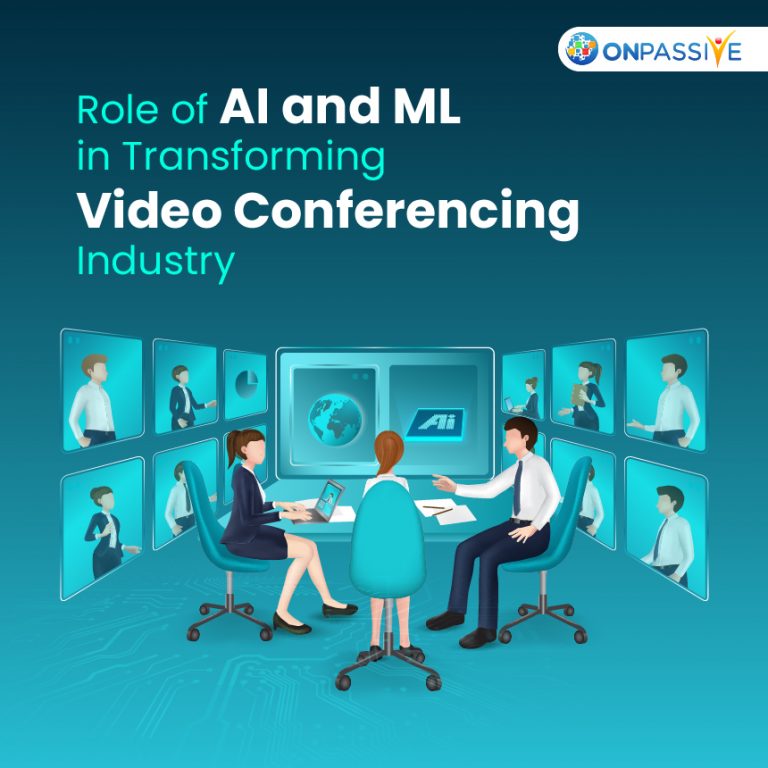
The demand for video conferencing is booming with each passing day. With all businesses around the world shutting doors due to the global medical emergency, since the rise 0f Covid-19, many governments and businesses, including the common public, have been relying on video conference tools.
In order to communicate with clients, employees and marketers, many businesses are extensively using video conferencing. Due to the increasing use of video conferencing, meetings and presentations through video calls have become commonplace for collaborations and remote work promotion.
However, video conferencing with Artificial Intelligence (AI) has become a key innovation in the communication sector. The video-enabled communication channels have become a key component and integral part of businesses to maximize their productivity.
Role of AI and ML in transforming video conferencing Industry
These days organizations are increasingly leveraging AI-powered tools to optimize their operations and to stay ahead of others in this stiff competition. However, the digital transformation has brought a shift in the way businesses are operating time-consuming tasks.
The advancements in communication technology help businesses improve their user experience while collaborating and interacting with users through virtual communication tools or channels.
The AI-powered Video conferencing helps organizations to enhance their employee and audience engagement while supporting their workflow by:
- Enriching web-based meetings via automated API synchronization.
- Auto-generation of personalized notes for every attendee of the conference.
- Providing suggestions by checking network connections prior to the meeting.
- Identifying the best time to conduct meetings based on the attendee’s radical Personalization.
Integrating AI with data analytics, computer vision, visualization technologies, and Natural Language Processing is helping industries to transform traditional and generalized meetings into smart meetings.
The following are a few ways how Artificial Intelligence (AI) and Machine Learning (ML) are helping enhance video conferencing tools:
- The power of NLP in action
Natural Language Processing (NLP) is increasingly being in multiple ways to improve video conferencing applications. Integration of NLP tools helps improve the overall user experience of video conferencing by providing text-based solutions to enhance non-verbal communication as well.
The AI-powered NLP tools enhance user-interface in distinctive ways by:
- Generating automated reports such as critical points and personalized reports to each attendee, such as assigning tasks.
- Voice-based virtual assistants that function on command
- Auto muting other attendees while one person is making a presentation
- Auto-adjusting voice quality by turning off background voice
- Translation of conversations to various languages.
- Computer Vision for a better Video Experience
Visual experience can be enhanced with intelligent video conferencing tools and computer vision. For example, when computer vision is integrated with AI, it can enhance the video quality and make real-time modifications by automatically detecting network issues or visual issues and optimizing light balance to enhance the quality of the video.
Computer vision helps deliver exceptional user experience by:
- Improvising the background environment of the attendee
- Making advanced video enhancements by widening camera angles, auto brightening and video alignments for focused participation of users.
- Tracking and tagging of participants individually
- Allowing the phone camera or webcam to frame all the participants.
- Insights from Artificial Intelligence (AI)
Artificial Intelligence can significantly manage and enhance the Video conferencing experience and efficiently automates the post-meeting updates. Video conferencing, when integrated with AI, helps organizations manage their regular meetings by automating simple tasks such as:
- Sending Important Reminders.
- Providing suggestions for micro-changes when doing presentations or attending a conference.
- Scheduling and rescheduling the calls.
- Suggesting relevant documents to participants before the meeting.
- Notifying participants about the changes in pre- scheduled meetings.
- Machine Learning (ML) to ensure Privacy
AI promises the privacy and security of the participants of the video conference. Many participants face trust issues while sharing confidential information, especially while communicating in a group call.
Application of Machine Learning (ML) helps detect network or web breaches in order to secure crucial information communicated during the meeting using ML-based anomaly detection. Therefore Machine Learning ensures the security and privacy of the confidential information of participants during the conference.
AI-powered communication tools have the potential to enhance the productivity and experience of virtual meetings by enhancing the reliability of the technology.
Conclusion
Artificial Intelligence (AI) is considered a robust, strategic and reliable resource to enhance video conferencing. The AI-powered video conferencing tools are resilient and can quickly adapt to any new technological changes according to the industry’s requirement.
Therefore, organizations and professionals across the world should start using and adapting AI-powered communication tools for live conferences and meetings to enhance the overall experience of video conferencing and meetings.


